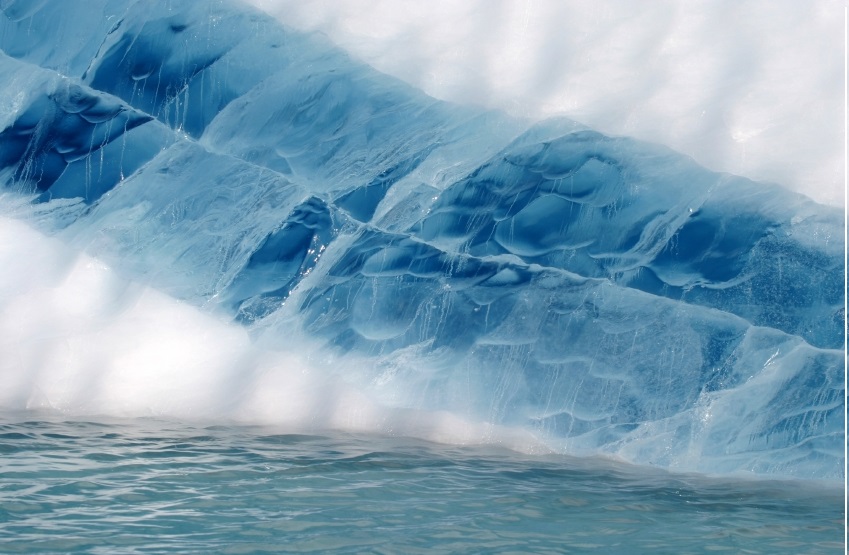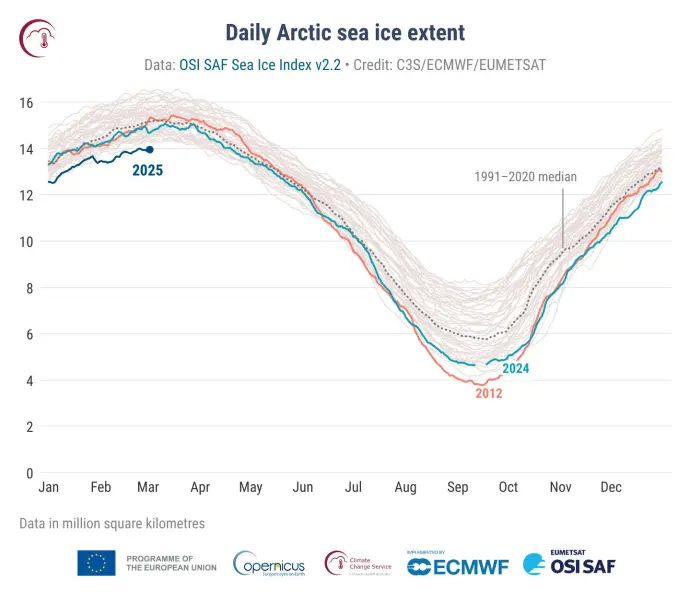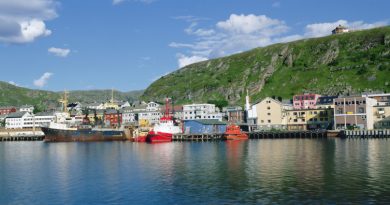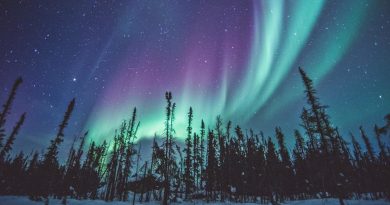Mid-winter Arctic sea ice reaches record-low

By Elizaveta Vereykina
“In February, the monthly Arctic sea ice extent reached a record low for the time of year for the third consecutive month, following record lows in December and January,” – Copernicus Climate Change Service reported.
The researchers underline that this year the daily Arctic sea ice extent decreased sharply at the end of January, dropping by about 0.3 million km² (roughly the size of Italy) in less than a week. Such a rapid decrease is unusual at this time of year, when sea ice is typically expanding towards its annual maximum. This drop coincided with the onset of an exceptionally warm period over the Greenland Sea and Svalbard region.
“Throughout February, the daily extent remained at its lowest values for the season. As of 28 February, the daily extent stood at 13.9 million km²—the lowest ever recorded for this date,” Copernicus reported.
The relatively warm northward winds brought above-freezing temperatures and caused strong sea ice drift toward the central Arctic Ocean, pushing the sea ice edge farther north, Copernicus researchers explained.
Several researchers the Barents Observer spoke with underline that sea ice extent has already changed dramatically. Just a few decades ago, both the Amundsen and Nansen basins of the Arctic Ocean were covered by several years old ice up to 4 metres thick.

“In the Arctic Ocean, the thick multi-year sea ice has largely disappeared, and most of the sea ice is now less than 2 meter thick first-year ice that does not survive the summer melt,” Philipp Assmy, senior researcher at the Norwegian Polar Institute told the Barents Observer. As the sea ice shrinks, the eco-system that comes with it changes as well.
Philipp Assmy highlighted that during his recent fieldwork, some of the crustacean species that live in the Arctic Ocean sea ice area were found in very low numbers or not at all. The disappearance of these crustaceans at the bottom of the food chain could have a cascading effect on Arctic inhabitants such as polar bears.
Related stories from around the North:
Canada: Study examines physical, social costs of thawing permafrost across Arctic regions, CBC News
Norway: 2024 Ranked Warmest Year on Record in 175 Years, Says WMO Report, The Independent Barents Observer
Russia: Melting permafrost may release industrial pollutants at Arctic sites: study, Eye on the Arctic
United States: 30–50% of critical northern infrastructure could be at high risk by 2050 due to warming, says study, Eye on the Arctic



